Why The Label is Important For Wellness
Why The Label is Important For Wellness
Learn where to use, how to mix, what it treats, storage and more!
You come into the garden center looking for a solution to a problem, and very quickly find dozens of products that may help. Which one to choose? You wonder, “Will this product save my plant? Will this work for my problem?” Our staff is happy to assist, of course, but there is a fantastic resource available on every single product on the shelves: the label.
Garden product labels contain so much information that often there is the equivalent of a small booklet on the bottle. Yes, you might have to pull open the sealed back and look through several pages of tiny text, but you’ll find a wealth of information there. As I was taking photos for this blog today, Nancy, one of our cashiers walked past. “I was always told,” she said, “that the smaller the print, the more important the information.” In the case of garden products, this is certainly true! That’s why we have a magnifying glass on the desk in this department for people who need it.
Here are several examples of why labels are important for the wellness of your plants, the environment and yourself.
What kind of product do I need?
The first thing to determine is the type of product you need to address your situation. Is the problem you see caused by insects, disease, or something else? Insecticides kill insects, fungicides control diseases, and herbicides kill or suppress weeds. There are also some products, such as those made from Neem, that treat insects and diseases. We know that sometimes it’s hard to decide if you have a fungal or insect problem, and we’re happy to assist customers with this. Using an insecticide on a plant that has a fungal problem is a waste of your time and money, plus it puts that material into the environment needlessly. So every solution should start with an accurate diagnosis.
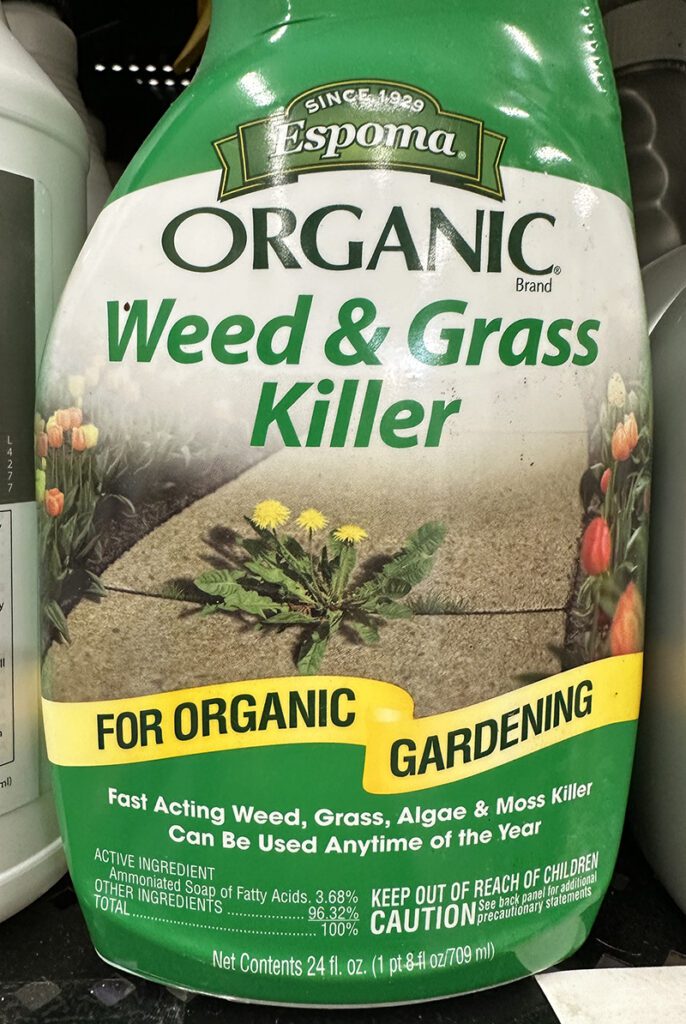
When can I use this product?
The label often tells you when the product should be applied. It might tell you to use it on days that are in a particular temperature range, on certain plants, or even before planting. Paying attention to this information will help you be successful.
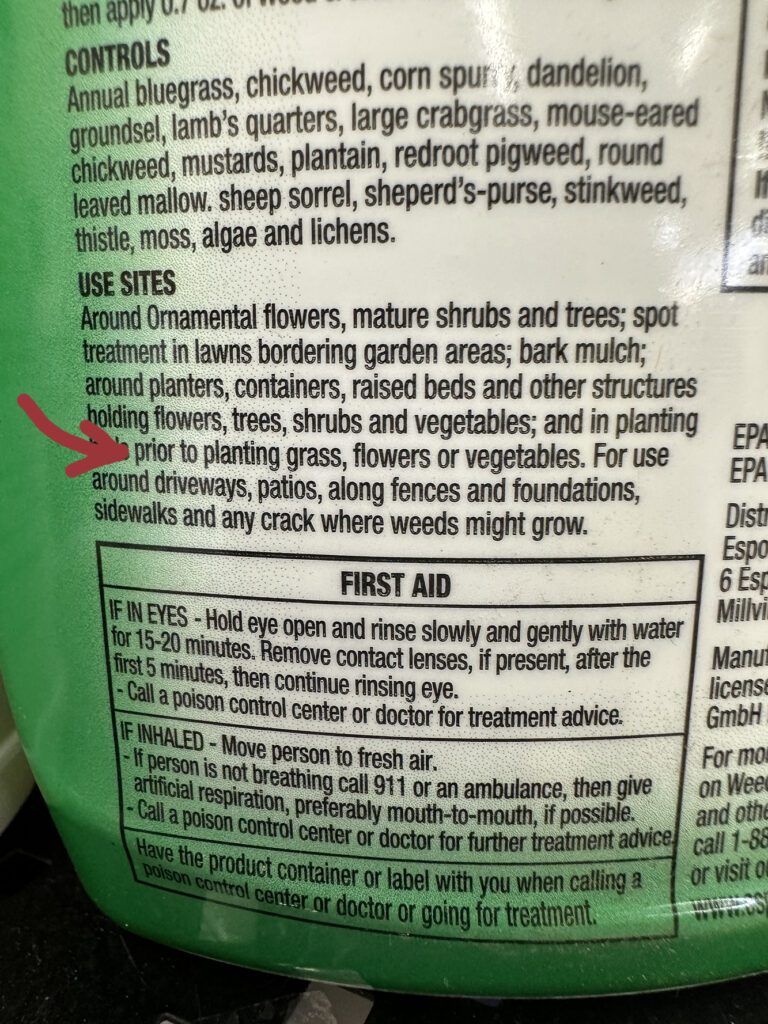
When can I safely plant in the area I’ve treated?
Products that kill weeds might interfere with the future germination of seeds, so the label will frequently say when it’s safe to sow seeds where you’ve used that product.
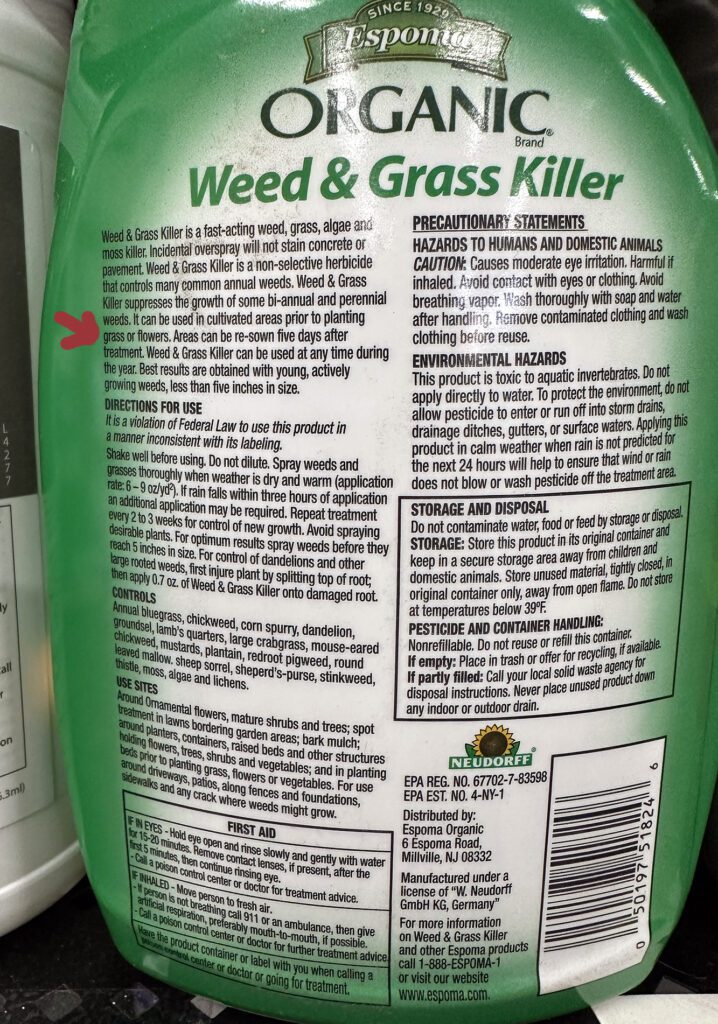
Is this safe for me to touch?
The label will tell you how to keep yourself safe when using the product. Most explain what to do should you be accidentally exposed. Even organic garden products should be used with caution, since they are made for the yard, not the human body.
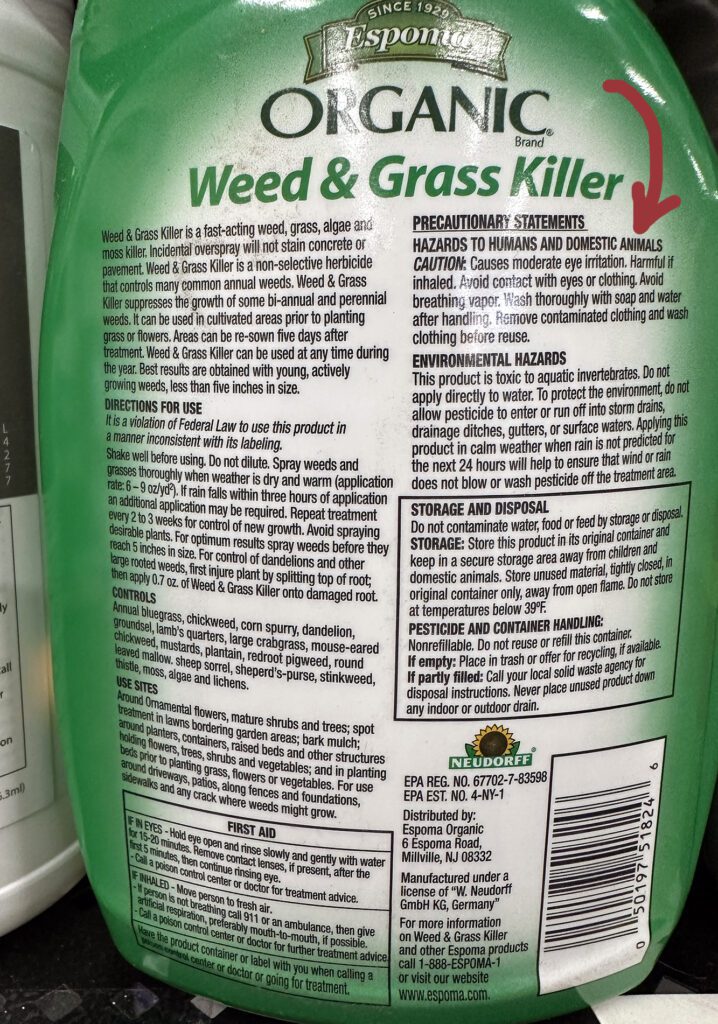
Is this product safe for the environment?
We want to protect the place where we live, and we acknowledge that what we do in our yards and gardens is important. The labels on products will tell you where and how to use a product so that the environment isn’t adversely effected.
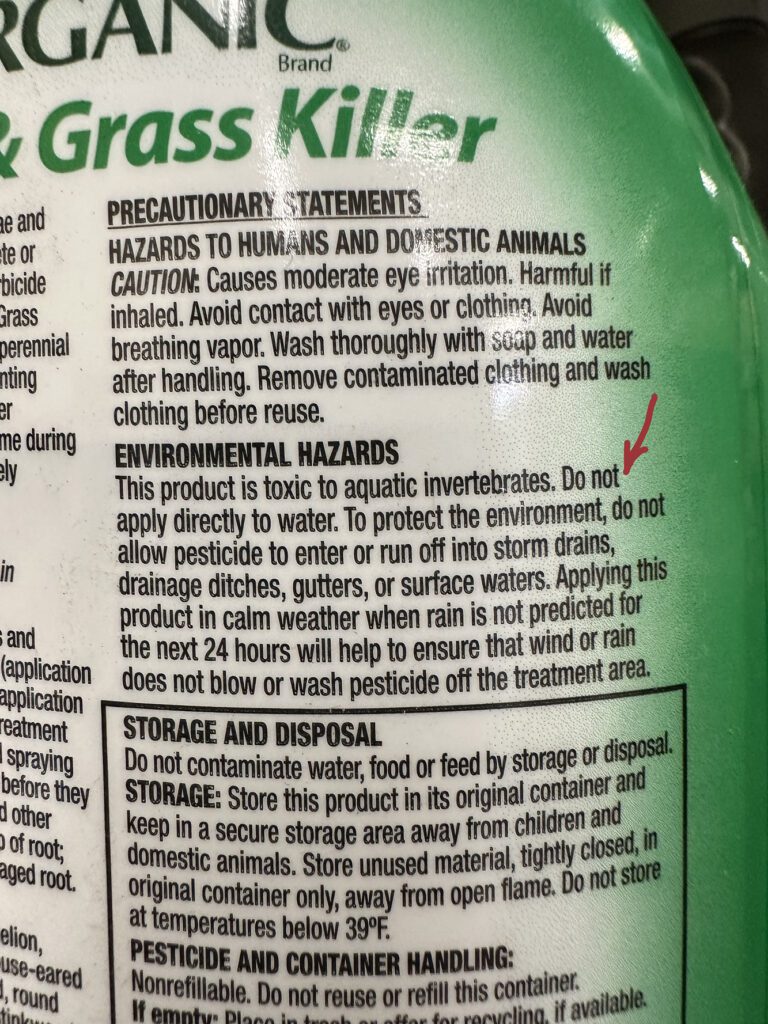
Will this product work for me?
Labels will list which pests or problems the product is intended to treat.
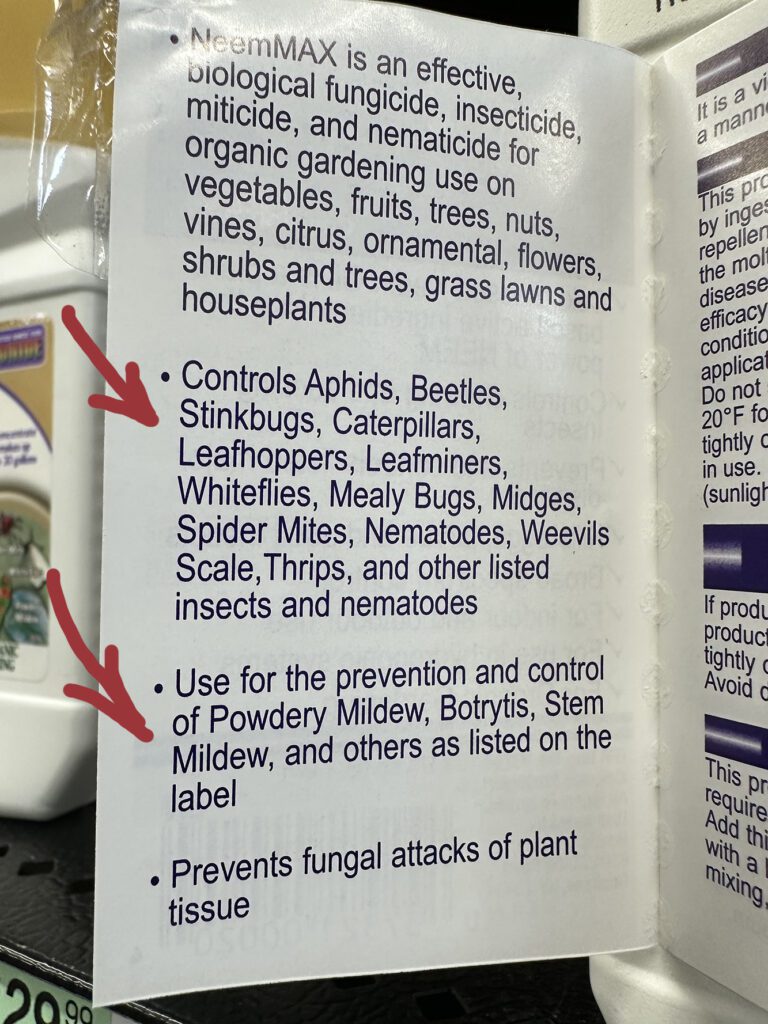
Can I use an older product? Can I mix it with water?
The label will tell you how to keep the product so that it’s still safe and effective in the future. You’ll also find instructions for mixing concentrates with water. Pay special attention to the proportions recommended. Stronger concentrations might damage your plants or make them prone to sun-scald, so never mix a product stronger than the recommended dose.
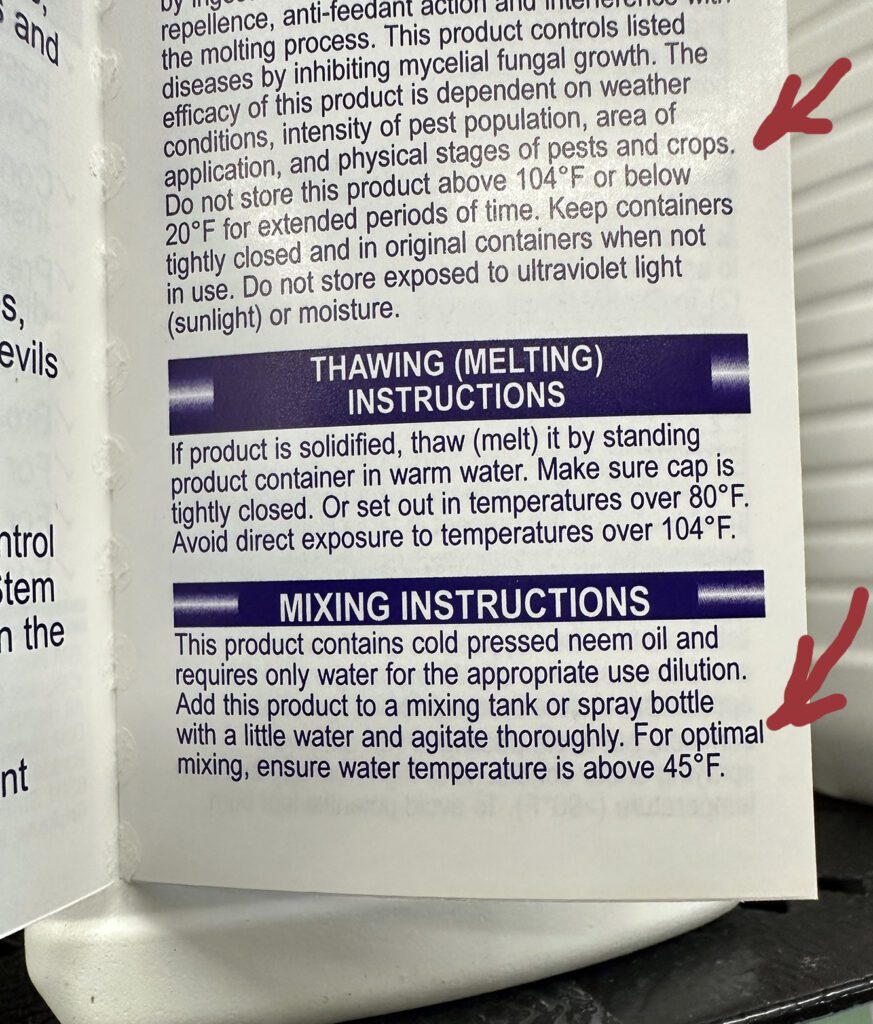
Can I use this product in my entire yard?
The product that’s fine to use in one area might be a problem somewhere else, so reading the label is crucial if you don’t want to do damage.
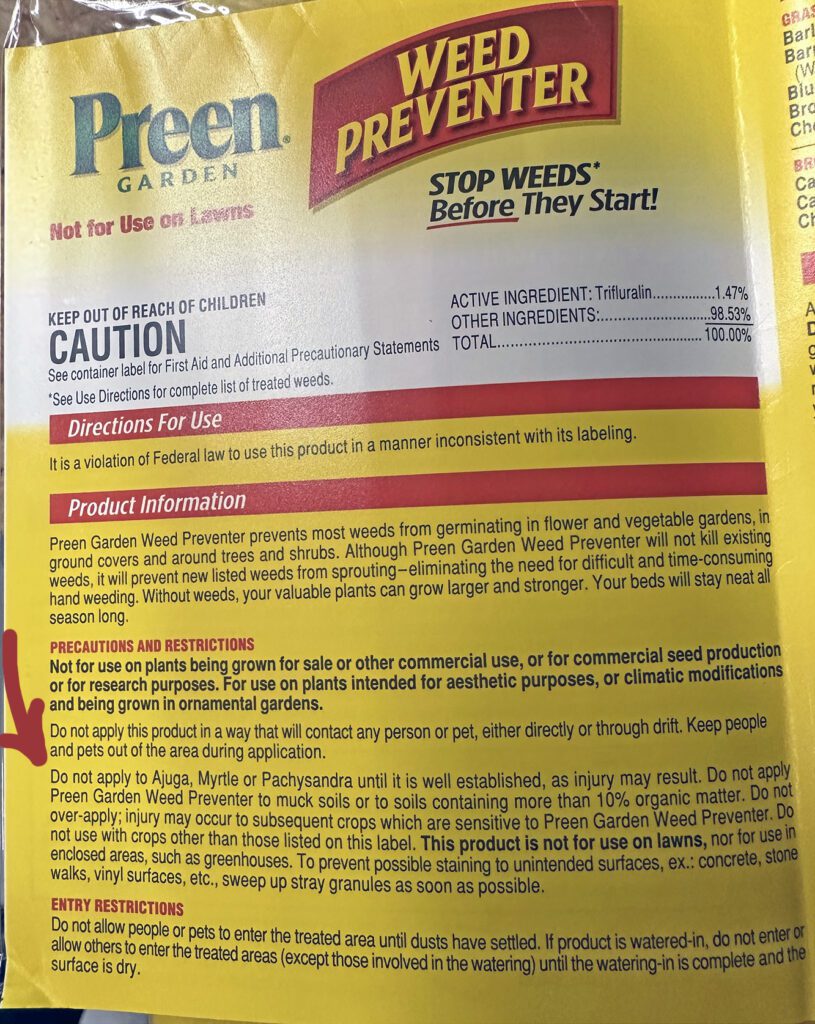
Is this product safe for my cat and dog?
People can wear protective clothing when applying a garden product, but pets tend to have the run of our yards and gardens with bare paws. Be sure to check the label on any product you use to see if there are times to keep your pets away after treating a section of your garden.
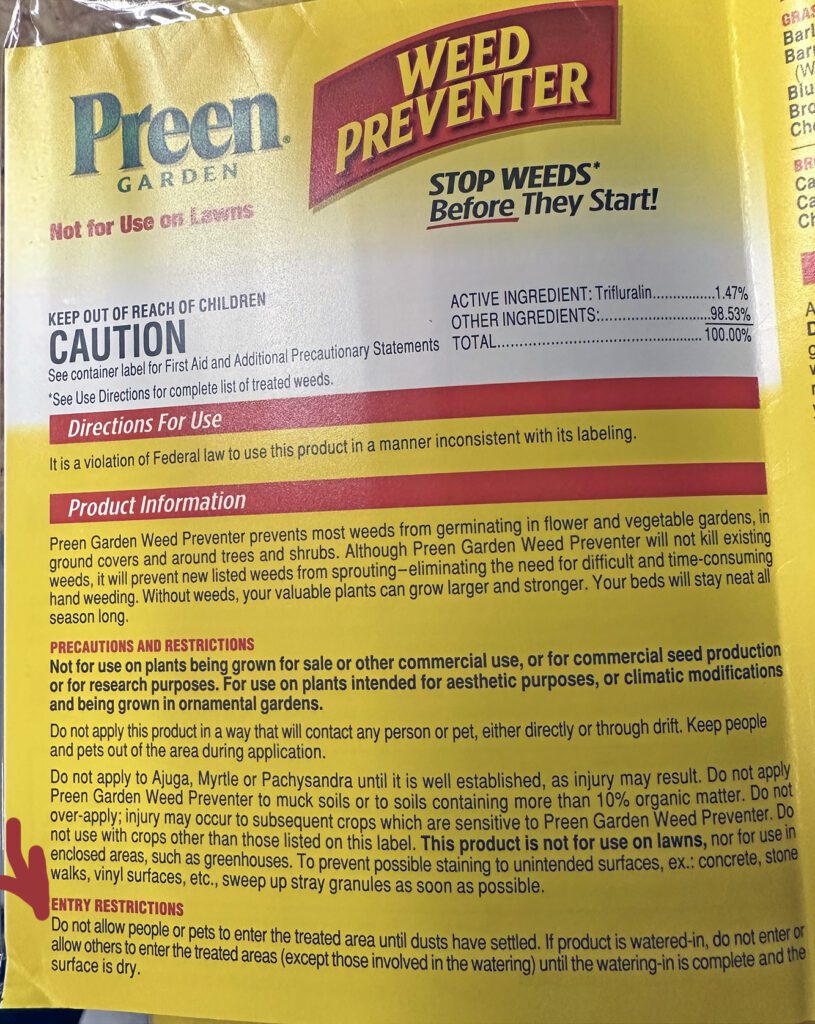
How do I find more information if it’s not on the label?
If what you seek isn’t on the label, look for the company’s contact information. You’ll usually find an address, phone number, or website where you can contact a representative with your questions.
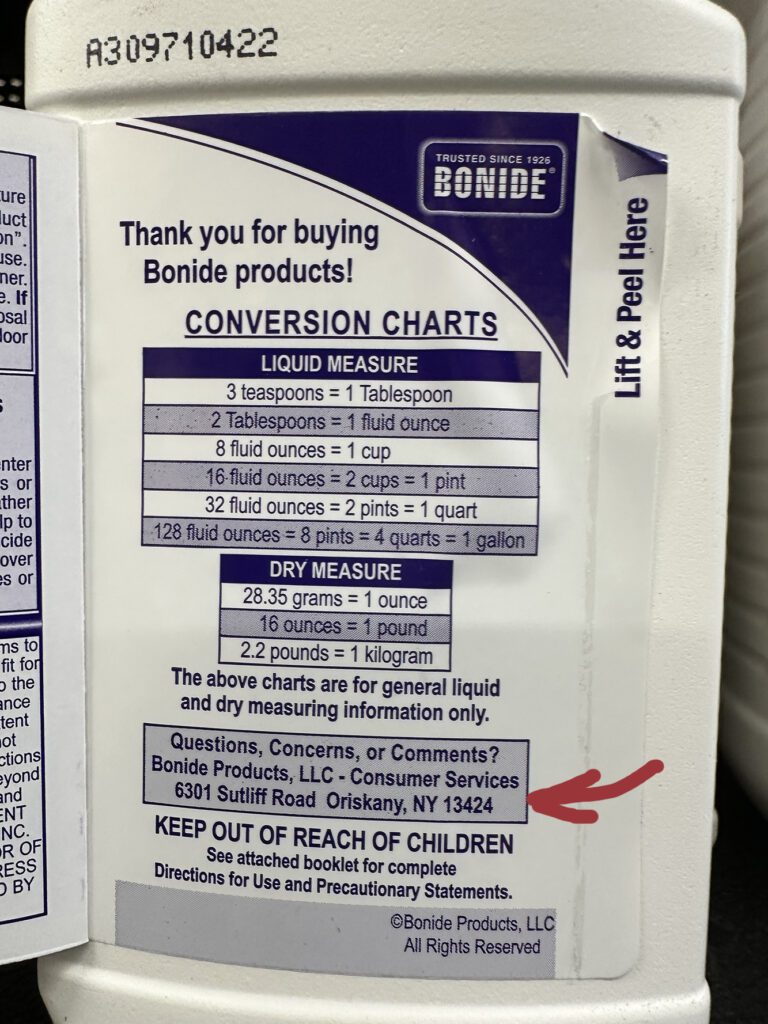
Read the label for wellness.
Our yards and gardens should be a sanctuary that promotes good health for people, plants, pets, wildlife and the Cape Cod environment. You can do your part to promote and protect wellness in all of these areas by using all products responsibly. That begins with reading the labels and using the product only when needed and according to the directions.
Subscribe To Our Newsletter
Sign up for our weekly email about sales and events.
